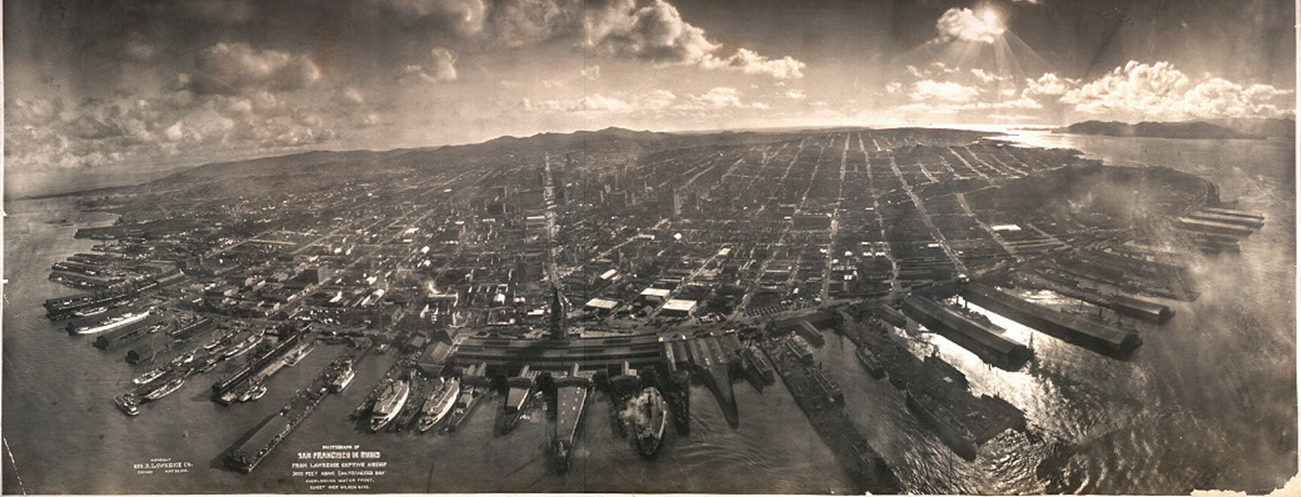
This photograph is a daguerreotype of San Francisco taken right after the 1906 earthquake and fire. The photographer, George R. Lawrence, used kites to get photos of San Francisco after the quake. He specialized in large formats and designed his cameras. Amazingly, he got this shot with no plane and heavy panorama cameras. One wonders how many shots he had to take to get this one. This sepia tone is from a digital reproduction of the original. His large-format panorama camera got a very wide-angle view from above of the entire cityscape, including the docks in the early morning after the quake. It shows the extensive damage, but it also shows that a great part of the city is still standing.
What interested me about this photograph was the floating quality it gives to this city, which was devastated after the 1906 Earthquake and fire. In a close up the flattened and blackened buildings of the downtown area can be seen, but in Lawrence’s view, we know they are there. However, this view of the city, floating in tranquil waters, with fluffy cumulus clouds overhead and the heavenly rays of the rising sun is a picture of hope. The city is damaged, but still there and ships are docked at the ports arrayed like lace collars on a portrait of a sophisticated elderly lady. We can see a reason for naming the not as yet constructed bridge the Golden Gate as the morning sun’s rays burn off the early fog. It would be built in 1935 to join this floating metropolis to the Marin headlands at the upper right. It is peaceful and we can see Market Street bisecting the photo. With all the other streets beginning there or at the Embarcadero. There seems to be some smoke still rising from the ruins of the downtown area, mixing with the clouds on the left. We can just see a bit of Golden Gate Park, where most of the newly homeless gathered afterward, and the distant San Bruno Mountains which divide San Francisco from South San Francisco. There are some taller buildings still standing in the background and, significantly, the clock tower of the Ferry Building still stands like a sentinel at the center of the Embarcadero. It is guarding a now peaceful city as it rests after the disaster as a symbol of survival. The city will rise again.
In my opinion, this is a prime example of the very best in news and landscape/architectural photography, and it preserves the very best view of a historic disaster. The technique is innovative and the presentation is stunning.
References
Library of Congress on line. 2010. Selected Photographers & Examples of Their Work.